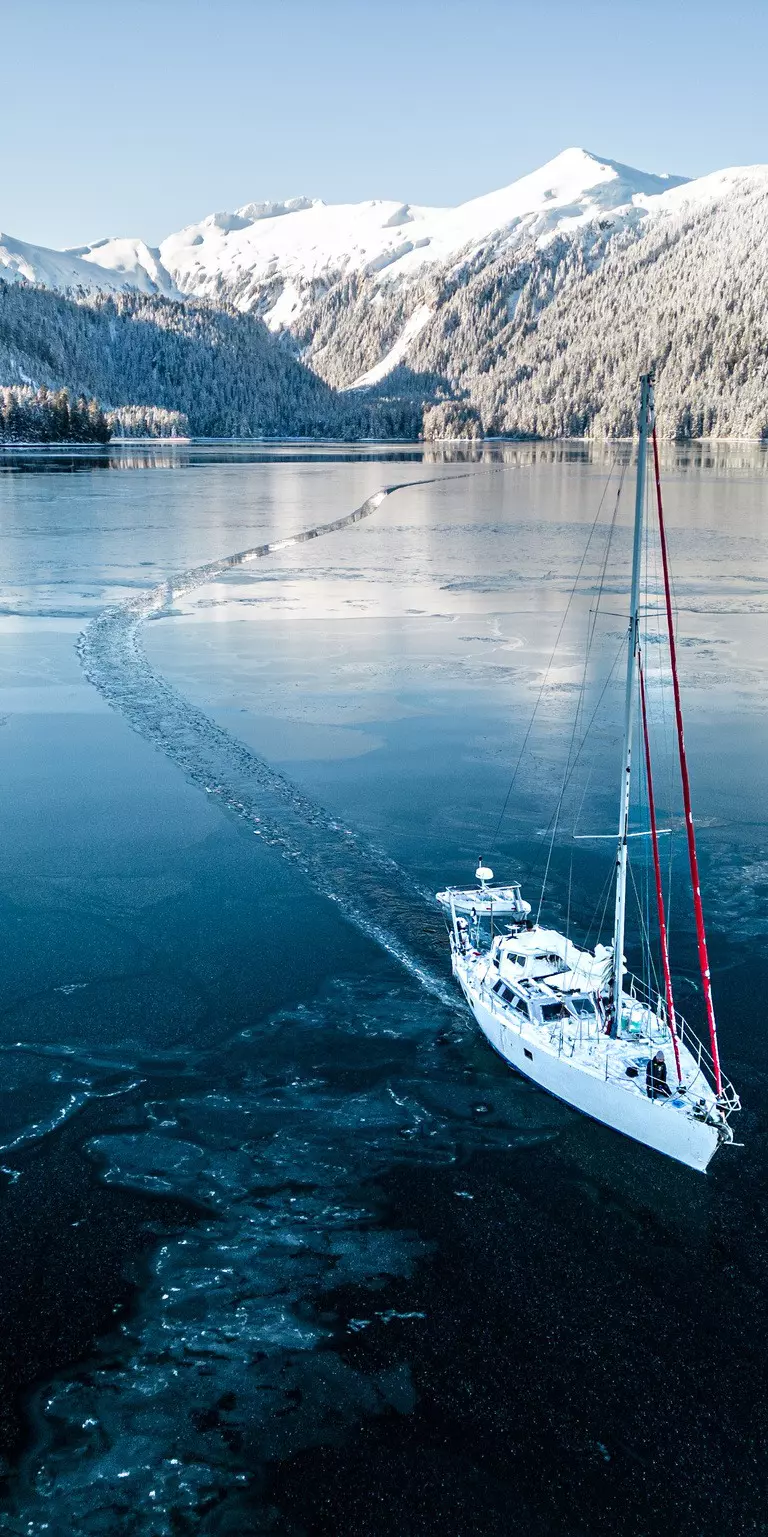ACU-150 & ACU-400 product recall
Find out more
Alaska is one of the most spectacular places to sail.
Sunday - 20 August 2023
Hello from Alaska! It's been a great summer, not only sailing but also enjoying the sea, but how did we end up here?
A year ago spring, my girlfriend Sohvi and I bought a slightly beat-up Garcia Nouanni aluminum boat from San Francisco, California. The previous owner had failed to restore this one due to illness, and the boat had been sitting in the dock for 15 years. The deck was covered with moss and tree saplings, and two bags of old bird nests and dead small birds were found inside the mainsail over the boom.
After 5 months of work, we renamed the boat "Snow" and headed for Alaska in October 2022, where we wanted to spend the winter. The test sailing of the boat was completely skipped in the rush and we thought to do it on the open sea...

The west coast of the USA is a very bad place, especially in autumn, but the weather favoured us. After about 550 miles of sailing, however, we noticed problems with the tiller, and the old autopilot started to crackle. We headed from the mouth of the Columbia River to the Astoria shipyard. The problems were fixed and we changed the autopilot to a Raymarine EV-100, the same series we had already tried on the previous boat. At this point, we also started to complete the installation of our other Raymarine equipment (list at the end of this story).
Once off the west coast of the US and into Canada, open water sailing changes to a more sheltered approach. Here begins the so-called "Inside Passage" to Alaska, a roughly 900-mile stretch of islands to the north. After clearing the west coast of Avona, we breathed a sigh of relief and spent Christmas in a thick snowfall in Canada, anchored in a sheltered cove just north of Vancouver.

The miles don't add up very quickly when sailing the Inside Passage, as we didn't want to make the trip at night on these inland waterways due to sinkholes, rough tides and otherwise just bloody nasty winter weather. So we weren't in Alaska until February 2023. But the real party didn't start until a month later, when we got even further north to Glacier Bay National Park. Here, in sunny weather, we were able for the first time to ski directly from our anchorage to the mountains that were just waiting for their faller. This is what we had come for!
Now summer in Alaska is turning to autumn, and we've had time to hike and spot wildlife. We have seen bears, for example, both from the boat and at remarkably close range in the woods. In the latter encounter, the bear was more spooked than we were and took off running with a thud. Then of course the obligatory fish talk; the fishing balance has been opened and in addition to the basic cod, so far we have caught three different types of salmon from the boat (coho, sockeye and pink). Pink salmon is known in Finland as the infamous humpback salmon, but it's a good fish to eat when caught at sea. Last week we also landed our first real halibut.

Northwest Passage
Alaska is one of the most spectacular places and the coastline and archipelago is huge. We will spend one more winter here, and next summer we will try to sail along the Northwest Passage to Greenland.
The Northwest Passage starts by sailing north through the Bering Strait and the Chukchi Sea, then turning "right", or east. This is where the most challenging part of the journey begins, trying to squeeze between the sea ice that stretches from the North Pole and Arctic Alaska and Canada to the Bay of Baffin next to Greenland. It's a staggeringly long journey of around 4,000 nautical miles (7,500 km), and you'll have to cover it quickly. The sea ice usually opens (if it has time to open) in early August or late July, but temperatures dip into the freezing range and new ice begins to form as early as September.
In addition, there are few settlements or service facilities along the way, so the boat and crew need to be fit. There is always a risk of failure when attempting the Northwest Passage, and even though the average ice cover in the Arctic is decreasing, the passage does not open up sufficiently for recreational vessels every year.
Preparations for the Northwest Passage have already begun, and we welcome you to follow the journey both here on Raymarine's blog and on YouTube and Facebook .
Juho's Raymarine electronics package includes: